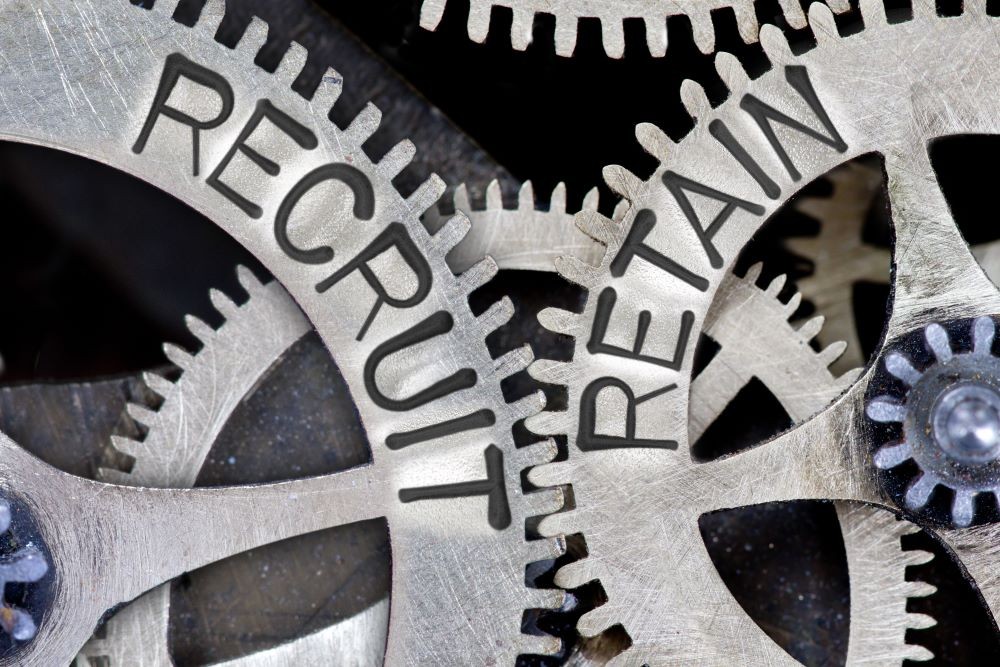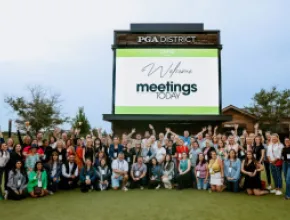
Surprise! As surveys of hundreds of the world’s most successful and innovative companies show, having more time, money or manpower isn’t the secret to getting ahead in business or creating competitive advantage.
Instead, as I discovered while researching my recent book Think Like a Futurist, the world’s most accomplished organizations strive to create leaders at every level and constantly give people more opportunities to speak up, share their insights and experiment with creative new solutions. (In other words, they constantly strive to cultivate entrepreneurial thinking in workers, listen more closely to customers and find better ways to tap into the power of their people.)
But with employee incentivization every bit as important as innovation to driving forward growth and momentum, what’s the best way to let colleagues know that their work is valued? And with so many great employee appreciation and recognition ideas to potentially draw upon when doing so, how can you determine which will resonate most with them?
Here are five ways you can get workers excited and reengaged and transform every individual at your business into a potential change agent, no matter what type of business or industry you represent.
[Related: 4 Ways to Thrive in a World of Change and Disruption]
1. Create Opportunities to Contribute
Sometimes, the simplest employee recognition ideas are the best. For example, when one global IT and big data leader we consult with has a huge, hard business problem that it can’t seem to solve, it regularly posts innovation contests on its website and invites workers worldwide to contribute great ideas, give feedback to their peers and vote on which concepts should be turned into real-world solutions.
Similarly, when one of the industry’s largest global finance firms is looking to identify prospective candidates for promotion to leadership roles, even though they may be young and inexperienced on paper or not have a background managing people, it holds hackathon (freestyle design) events at which employees from every department are invited to work together to come up with working product prototypes in just 48 hours.
Some of our other clients hold regular breakfasts in which senior leaders provide time to sit down and swap ideas with new hires; provide regular conferences, workshops and strategic retreats where colleagues spend time sharing ideas and learning from other; and purposefully put employees through a rotation of job roles to help them network and gain new insights and skills.
All of these employee recognition ideas help reinforce an important point: Our company is listening to what you have to say, and every employee’s contribution matters. This kind of recognition can be even more powerful than financial incentives when it comes to promoting an organizational culture of inclusiveness.
Meetings and events industry examples: Hold weekly meetings in the lead-up to events to discuss the different roles team members are responsible for, with an invite for other team members to offer suggestions. Also, when appropriate, foster an environment where team members can shadow each other and learn about other jobs/tasks in the organization or project. Maybe a junior planner who mainly works on logistics for an event could gain insight into the “bigger picture” by shadowing a senior planner who is negotiating contracts further out?
[Related: How You Must Adapt to the Post-Pandemic Future of Work]

2. Offer Unique Upsides and Benefits
If you want to create more compelling job offers and attract and retain top performers by keeping your employees happier, it helps to analyze your ideal hires’ needs and customize benefits to each prospective candidate.
For example, one major quick-service restaurant chain not only provides health insurance for employees who work 25 or more hours weekly to reward an older audience of part-time workers looking to supplement their retirement income, it also provides college tuition for many candidates because an equally large segment of employees are college-bound individuals and twenty-somethings.
Many leaders in other fields are also following suit by shifting away from demanding employees be chained to a desk during daytime hours to operating models that emphasize teleworking opportunities and flexible schedules to help attract and keep spirits high amongst workers, especially Gen Xers and Millennials who may be working parents.
Customizing the benefits of being a part of your organization can be one of today’s most effective employee appreciation ideas and produce big wins when it comes to boosting worker satisfaction and morale.
Meetings and events industry example: Solidify your “flex-time” policies to allow more remote work or allow for more personal time when workers are on the road working and event.
3. Request Regular Creative Input
Crowdsourcing creative contributions from your employees—e.g., inviting them to submit ideas and input en masse—can also be a powerful way to reinforce your appreciation for their skills. Whether asking workers to send you their best designs for new logos; inviting them to film videos for possible consideration in online advertisements; or requesting that they share their best stories for inclusion in eBooks, whitepapers and brochures, many engaging and dynamic ways exist to get your workforce involved.
 From photos to podcasts, slideshows to social network posts, these types of user-generated content programs can provide ready opportunities to spotlight key contributors and put a more human face on your brand as well. Not only do these types of programs feel more authentic and genuine for the effort, they also provide additional opportunities to shine the spotlight where it’s rightfully deserved—on the everyday employees who make your business the wonderful place to work it is—as well.
From photos to podcasts, slideshows to social network posts, these types of user-generated content programs can provide ready opportunities to spotlight key contributors and put a more human face on your brand as well. Not only do these types of programs feel more authentic and genuine for the effort, they also provide additional opportunities to shine the spotlight where it’s rightfully deserved—on the everyday employees who make your business the wonderful place to work it is—as well.
Meetings and events industry examples: Create a “crowdsourcing committee” that actively encourages all staffers to ideate and submit suggestions for new program elements or identify new trends pulled from pop culture that can be incorporated into events. This will help you “stay ahead of the curve” while also tapping junior staffers for what may be their most valuable asset—their cultural connection to the demographic that will fuel the future growth and even viability of your events.
[Related: 12 Major Changes Coming to the Meetings and Events Industry—And How to Prepare]
4. Promote Professional Growth and Development
Ongoing learning and growth are the basic building blocks of a successful business and a successful career. So, make a specific point to also help employees pick up in-demand training, experience and skills wherever possible. (This is among the best employee appreciation ideas you can implement.)
Sometimes, this means setting budgets aside to invest in formal education, training or certification programs. But just as often, it can include simply providing workers with the access and time they need to sit down with colleagues from different departments to discuss best practices or gain deeper insight into new areas of the business, new technologies and new growth markets.
If you’re looking to start simple, remember: Efforts here can be as simple as springing for a pizza night that brings the marketing and software development teams together to learn more about how each other works and share ideas for improvement. The key is to actively connect workers with resources and opportunities that can help them learn, grow and expand their skill set, and thus become more valuable on the job.
Meetings and events industry examples: This one’s a no-brainer, as the meetings and events industry offers so many educational resources, from webinars to in-person seminars. Investing in your staff by broadening their industry knowledge will lead to them investing more of themselves into furthering their expertise. If they can earn continuing education units, this will only deepen their personal investment. Important: Make sure they share what they learned with other staffers!
5. Help Colleagues Shine
Most of tomorrow’s workforce—regardless of age or background—won’t measure success in terms of money but rather their ability to accomplish goals and make a difference in their organization or community. They’ll also want to work for innovative companies and expect to run their own forward-thinking entrepreneurial ventures at some point.
 If you’re hoping to boost spirits, and employee engagement, it helps to remember that you can do so by providing clear goals, an engaging variety of assignments to tackle, and cultivating a go-getting attitude in your organization.
If you’re hoping to boost spirits, and employee engagement, it helps to remember that you can do so by providing clear goals, an engaging variety of assignments to tackle, and cultivating a go-getting attitude in your organization.
Likewise, you’ll further want to provide more mentorship and ongoing feedback in the workplace, as well as more transparency, guidance and honest input about how the organization is evolving, and how they can personally contribute in ways that make a meaningful difference.
And remember, it’s common these days for high-performing employees to come and go as they seek to expand their horizons and take on new challenges and roles. If they choose to move on, stay supportive. Not only will doing so reinforce to others that you truly care about them, these selfsame individuals may very well may rejoin your team at a later date more experienced and capable for having done so.
Meetings and events industry examples: Hold monthly company meetings that share the successes and challenges of your organization, and not just precon or postcon meetings. Everyone appreciates an atmosphere of transparency and insight into where they are in the “big picture.” This is also a time to recognize key achievements, communicate and reinforce the values of your organization, and allow time for anyone to chime in with suggestions, concerns or out-of-the-box ideas that may just turn into gold.
Read Next: 25 Ways to Future-Proof Your Meetings and Events Firm







